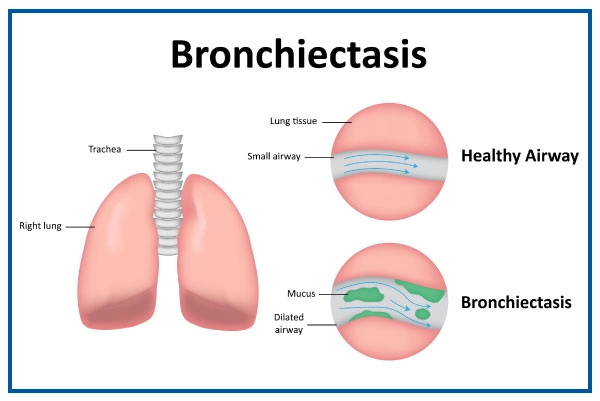Bronchiectasis
Bronchiectasis is a respiratory disease in which the bronchial tubes get permanently damaged, swollen, and thickened. Germs and mucus build up in the lungs due to clogged airways, thus increasing the risk of respiratory infection and airway blockages. Bronchiectasis is a chronic condition that worsens over time.
This pulmonary disease has no cure, but it is treatable. With treatment, patients should be able to lead a normal life. However, flare-ups must be managed as soon as possible to keep oxygen flowing to the rest of the body and prevent additional lung damage. Let us have a look at the symptoms, causes, risk factors, diagnosis and treatment for Bronchiectasis.
